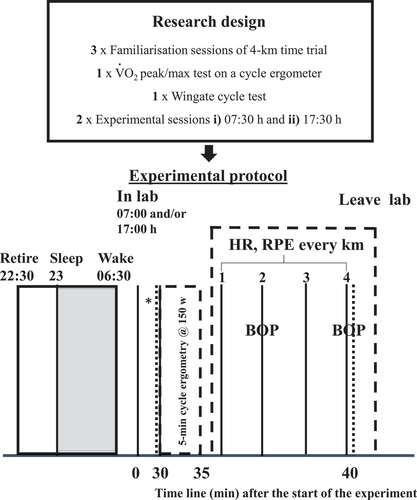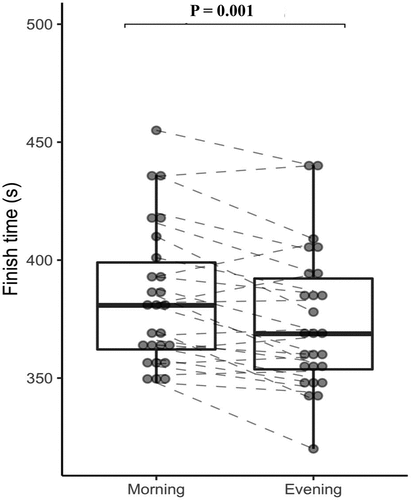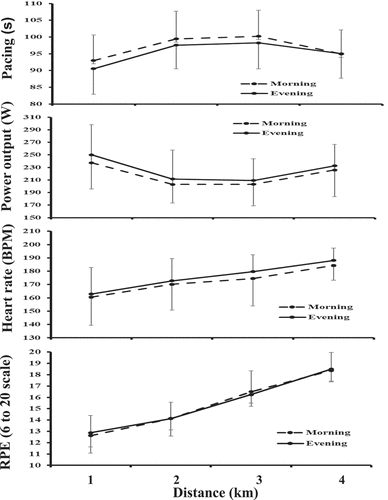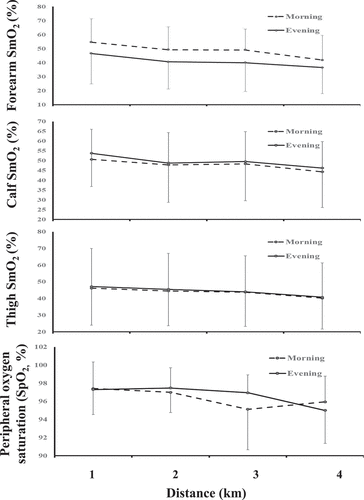Figures & data
Table 1. Checklist of considerations in chronobiological studies on humans and sporting performance for participant (1–3), methodological and equipment (4–8) and environmental (9) considerations and general comments and insights into decision for our study.
Figure 1. Schematic of the research design and protocol for conditions undertaken in the morning (07:00 h) or evening (17:00 h). Rectal and skin (Tr and Tsk) temperature and ratings of perceive exertion (RPE) were measured after the participants had reclined for 30-in at the start of the protocol and after the warm-up. Tr and tsk, RPE and HR values were also measured prior to taken every 1-km and the 4 km-time trial in the environmental chamber; with pacing asked every 2-km. Black dotted lines indicate blood taken. * indicates sleep questionnaires administered. BOP =Bridget’s optimal pacing scale.

Table 2. Mean (SD) values for morning (M) and evening (E) for resting or resting and post warm-up. Significance (P-value) for main effects for time of day (DV), pre-post warmup (WUP) and the interaction (DV x WUP) are given. Statistical significance (p < 0.05) is indicated in bold. * indicates a significant DV.
Figure 2. Individual and mean (±95% CI) values for the finishing times in the evening and morning for a 4 km time-trial.

Figure 3. Mean (SD) values for pacing (s), power output (W), heart rate (BPM) and rating of perceived exertion (RPE) every 1-km for the 07:30 and 17:30 h for a 4-km time-trial.

Table 3. Mean (SD) values for morning (M) and evening (E) for pre-post or during the 4 km TT. Significance (P-value) for main effects for time of day (DV), distance or pre-post and the interaction of (DV x distance or DV x pre-post) are given. Statistical significance (p < 0.05) is indicated in bold * indicates a significant DV. Where RPE = rating of perceived exertion and TC = thermal comfort.
Figure 4. Mean (SD) values for forearm, calf, thigh muscle oxygenation (SmO2, %) and peripheral oxygen saturation (SpO2, %) every 1-km for the 07:30 and 17:30 h for a 4-km time-trial.

Table 4. Comparison of current study and other authors to the check list for consideration for diurnal variation (DV) studies (table 1), only studies whose participants were male, used a time-trial where distance was set and were undertaken in a thermoneutral environment were included in this comparison. FT = finishing time, PO = power output and CT = core temperature. * indicates contacted authors for information.
